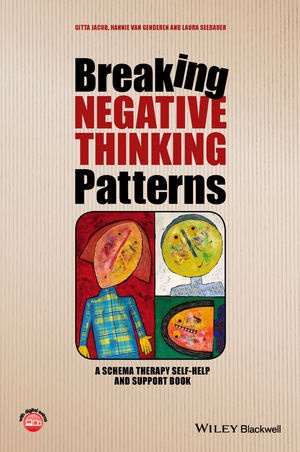Read more
Informationen zum Autor Gitta Jacob is a Clinical Psychologist and Schema Therapist at GAIA, a therapy development and research company in Hamburg, Germany. A founding board member of the International Society for Schema Therapy (ISST), Dr. Jacob is also co-author of Schema Therapy in Practice: An Introductory Guide to the Schema Mode Approach (2012).Hannie van Genderen is a Clinical Psychologist, Supervisor of the Dutch Association for Behavioural and Cognitive Therapy, and Chair of the Dutch Schema Therapy Association. She is also a Psychotherapist at the Maastricht Community Mental Health Centre and co-author of Schema Therapy for Borderline Personality Disorder (2009). Laura Seebauer is a Psychologist, Psychotherapist and Schema Therapist in the Department of Clinical Psychology and Psychotherapy, University Medical Centre, University of Freiburg, Germany. Klappentext Breaking Negative Thinking Patterns is the first schema-mode focused resource guide aimed at schema therapy patients and self-help readers seeking to understand and overcome negative patterns of thinking and behaviour.* Represents the first resource for general readers on the mode approach to schema therapy* Features a wealth of case studies that serve to clarify schemas and modes and illustrate techniques for overcoming dysfunctional modes and behavior patterns* Offers a series of exercises that readers can immediately apply to real-world challenges and emotional problems as well as the complex difficulties typically tackled with schema therapy* Includes original illustrations that demonstrate the modes and approaches in action, along with 20 self-help mode materials which are also available online* Written by authors closely associated with the development of schema therapy and the schema mode approach Zusammenfassung Breaking Negative Thinking Patterns is the first schema-mode focused resource guide aimed at schema therapy patients and self-help readers seeking to understand and overcome negative patterns of thinking and behaviour. Inhaltsverzeichnis Preface viiiCredit for Images x1 Introduction 11.1 What Is Schema Therapy? 21.2 Understanding the Origin of Your Patterns 41.2.1 Recognizing your Modes 51.2.2 Changing your Modes 5Part I: Become Familiar with Your Modes 72 Child Modes 92.1 Vulnerable Child Modes 122.1.1 Get in contact with your own Vulnerable Child Mode 172.1.2 Detecting Vulnerable Child Modes in others 202.2 Angry and Impulsive Child Modes 202.2.1 Get in contact with your own Angry or Impulsive Child Mode 262.2.2 Detecting Angry or Impulsive Child Modes in others 282.3 Happy Child Mode 322.3.1 Get in contact with your own Happy Child Mode 342.3.2 Detecting the Happy Child in others 362.4 Summary 363 Dysfunctional Parent Modes 383.1 Demanding Parent Modes 443.1.1 How can I detect my own Demanding Parent Mode? 493.1.2 How can I detect a Demanding Parent Mode in other people? 493.2 Guilt-Inducing Parent Modes 513.2.1 How can I detect Guilt-inducing Parent Modes? 553.3 Punitive Parent Mode 573.3.1 How can I detect a Punitive Parent Mode in myself? 603.3.2 How can I detect a Punitive Parent Mode in others? 623.4 Summary 634 Coping Modes 654.1 Compliant Surrender Mode 734.1.1 How can I detect a Compliant Surrender Coping Mode in myself? 744.1.2 How can I detect a Compliant Surrender Mode in others? 814.2 Avoidant Coping Mode 814.2.1 How can I detect Avoidant Coping Mode in myself? 844.2.2 How can I detect Avoidant Coping Mode in others? 844.3 Overcompensatory Coping Mode 884.3.1 How can I detect Overcompensatory Coping Mode in myself? 884.3.2 How can I detect Overcompensatory Coping Mode in others? 924.4 Summary 955 Healthy Adult Mode 965.1 How can I detect a Healthy Adult Mode in myself? 985.2 How can I detect a Healthy Adult Mode in others? 995.3 How can I distinguish the Healthy Adult Mode from other modes? 1015...

